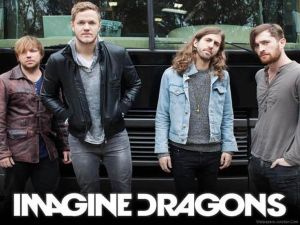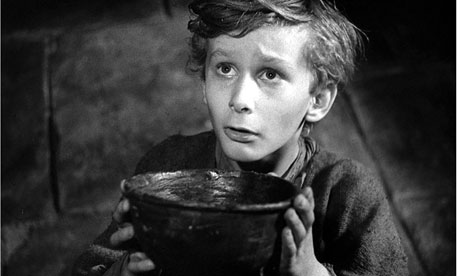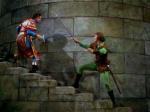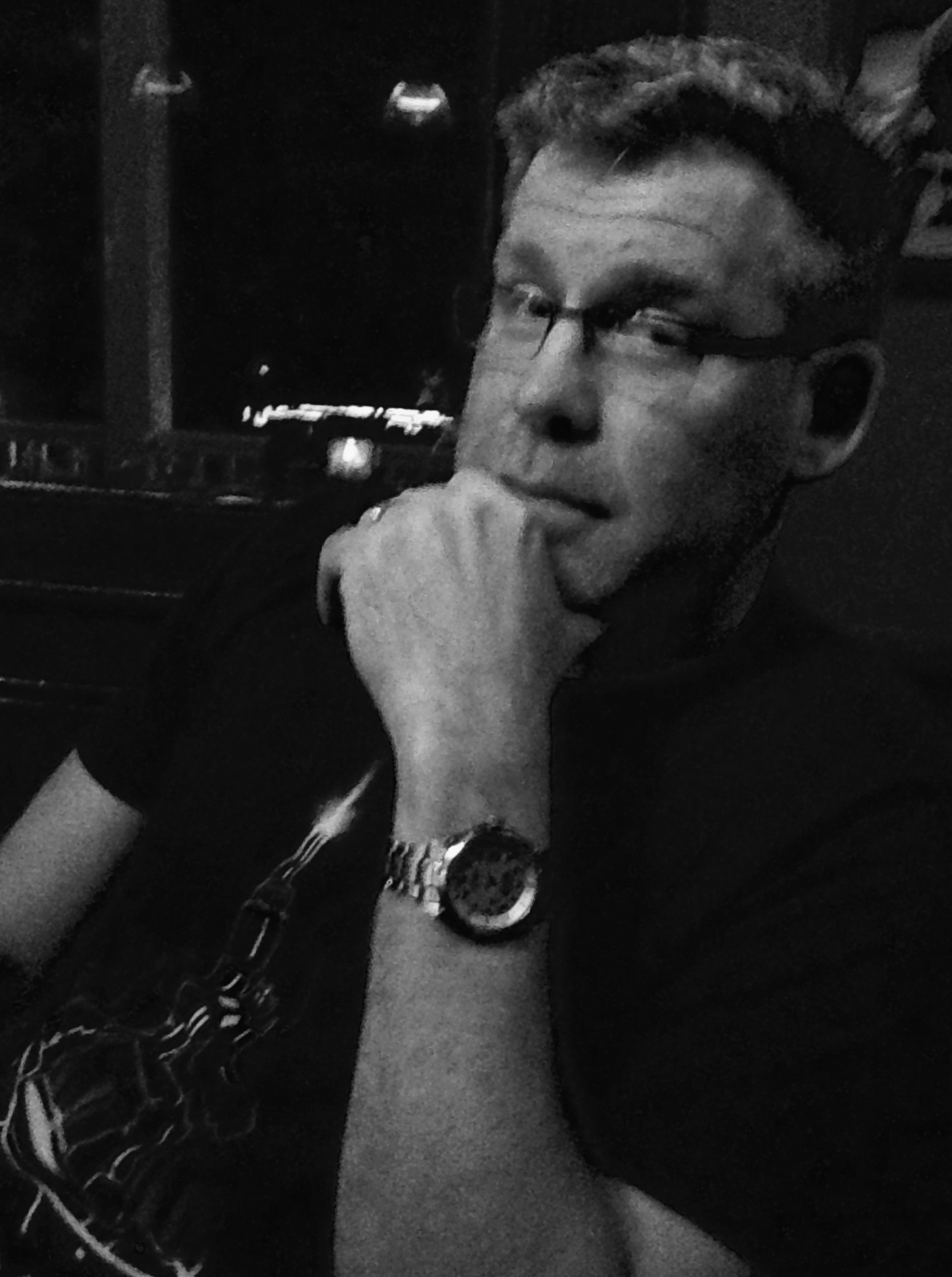Today, R.Todd Henrichs returns to talk about the two main types of fight scenes: Sword fights and epic battles. Want to know how to make your fight scenes exciting and fun to read? Read on to find out his 4 points for creating action scenes, whether small or epic. To read more by R.Todd, go HERE.
I write how I see things. Or imagine. Because let’s face it, some of the things I imagine just don’t exist. Like dragons! And for the three of you who got that… you’re welcome.

For those who didn’t…
When it comes to a lot of my writing, this actually works out really well. I map out the room, I see the setting, I watch the characters, and all I have to do is keep replaying in my mind what it is I see as I get it down on paper. Much like a painter doing a still life, I would assume, but as my drawing abilities are more akin to what you might imagine kindergarten kids capable of… I’ll leave that to people like Bob Ross, Captain Mark, and Melissa (seriously, that girl’s got talent).
When it comes to fight scenes, this is really helpful. Mostly because I’m watching it in my mind. I’m mapping out every step, every swing, where the weapons are, what they look like, the feelings of each person, and every little detail that happens.
Now, this is great when it comes to a one on one fight. Maybe a few more, but once you get above five people, the set (in my head) gets a lot more crowded, and I find myself falling into the trap of the screenwriter.
You see, screenwriters have it really easy, at least as far as I have been told, when it comes to writing battle scenes. They merely type down something akin to cliff notes as to who is fighting and who wins. Wouldn’t that be great to do as a writer?
Imagine, Bob and Larry get into a fight, and as a writer, all I would have to do is put, “Bob and Larry fight. Bob wins.” And that’s it. Perfecto! Awesome-tismo! And other Italian words that mean cool.
But, no… the reader requires more.

More, please…
And just like that guy in the sideways hat standing there overlooking Oliver, I am forced to look at my reader and bellow out in a mocking tone…
MORE???
Come on? Can’t you just accept what I write as all you need? I’m letting you let your imagination run wild. Fill in the blanks, make your own conclusions. Hey, you , reader… you do the heavy lifting…
Can’t the reader see I have more important things I need to write, like plot, dialogue, theme, subplot, subtext, sub subs… (wait, that’s not a thing, is it?)
And with all that stuff I have to do to make sure the story is good, can’t you, the reader, cut me some slack?

Why can’t you just accept what I wrote?
And yet, when I read something, I want those things in my story. I want to feel the blades vibrate in the hands of the hero as he is struck over and over again by the bad guy who is unleashing his rage upon his fallen foe. I want to feel the tension of an against-all-odds battle that has to be won or everything falls apart. I want to feel the hurt when the heroine is hurt from the laceration that the dagger used against her caused. I want the exhaustion of knowing a fight was well fought.
Hrm, maybe this is why they tell writers that if you want to be good, you have to read? And that is some great advice. Becuase you learn so much from others have done it.
And in reading, you start to see that fights are more than just words. For instance, did you know that in the Narnia series (the books), C.S. Lewis wrote epic battle scenes that lasted less than a page, some spanning less than two paragraphs?
And from that, I’ve garnered a few things that might be helpful if you ever find yourself having to lay out a battle.
Smaller means bigger
Just as big fights need to feel smaller, small fights (ones between t wo to five people) should feel huge. Think about Errol Flynn and his daring bits of acrobatic swordsmanship. The duck, dodge, parry, spin… wait, that’s Daffy doing Errol… but you get the point. The fewer people involved, the more involved you need to be with the fight.
wo to five people) should feel huge. Think about Errol Flynn and his daring bits of acrobatic swordsmanship. The duck, dodge, parry, spin… wait, that’s Daffy doing Errol… but you get the point. The fewer people involved, the more involved you need to be with the fight.
Bigger means smaller.
Ok, the reality is the bigger the fight the more prone to clutter that you have. The more people, the more likely you are to lose sight of the things that matter. So, when dealing with bigger fights, streamline as much as possible. Highlight things that matter, because unless Private Davis has a reason for being mentioned later in the story (or was mentioned earlier), nobody is really going to care about knowing how he died.

That’s Private Davis, 48th row, 173rd from the left. See him?
Epic should feel epic
Nothing ruins a fight scene more than having it fall flat. Remember, a fight should be treated just like a story in and of itself. There should be tension, there should be an ebb and flow, and there needs to be something at stake. After all, our readers aren’t stupid, and they are going to know when you throw something in just for fluff because you felt it needed it.
It should be a tool
And harping just a bit on that last part… it needs to further the story. For the love of all that is sacred, don’t do a bar fight just to bring the characters together. I was doing that back when I was 12 and first edition D&D was out (yes, I’m old.. shut up). Fights need to feed the story. They need to resolve, they need to introduce, they need to define (not all at once, and maybe only one at a time). The point being, they need to do something and not just be…
So, there you have it. At least, my version of how I see things. And seriously, we need more dragons.
#
 R.Todd is many things: an attached wallet to a wife; a detached wallet to two offspring; a player of games; a writer of words; a biker of cycles; caretaker of two cats; someone who hates writing about himself; but mostly a man full of snark. When not working on writing one of his several novel ideas, he practices his short-fiction at A Flash of Fiction… and regales the populace with his personal viewpoint on matters at Thoughts from the Front…
R.Todd is many things: an attached wallet to a wife; a detached wallet to two offspring; a player of games; a writer of words; a biker of cycles; caretaker of two cats; someone who hates writing about himself; but mostly a man full of snark. When not working on writing one of his several novel ideas, he practices his short-fiction at A Flash of Fiction… and regales the populace with his personal viewpoint on matters at Thoughts from the Front…


Reblogged this on Thoughts from the Front and commented:
Hey, go check out my contribution to Epic Fantasy Writer’s monthly theme, “Epic Fights and Battles”, where a group of fantasy writers share their thoughts on different aspects of writing fantasy.